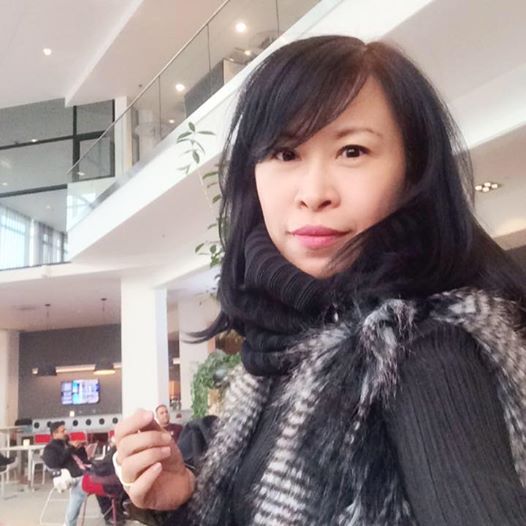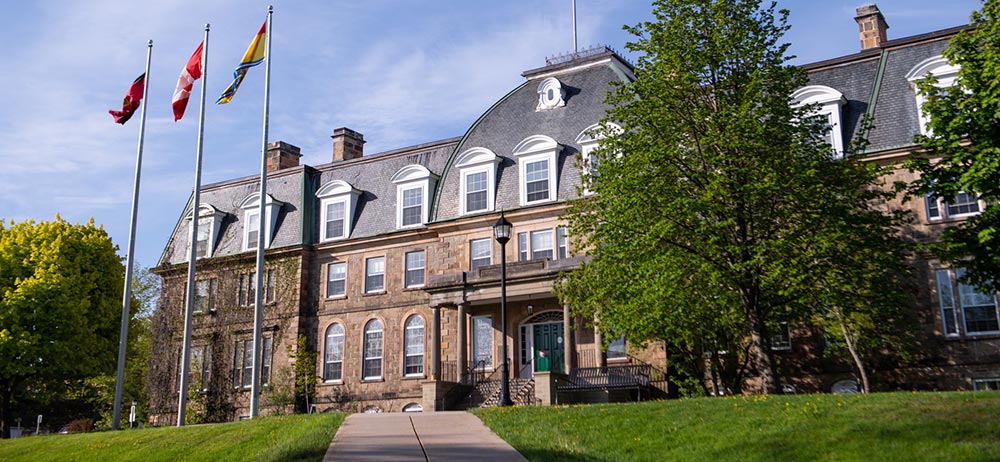Visiting McCain Scholar Chen-Fen Chen studies elder care and migrant care-givers
Author: Fredericton Arts
Posted on Apr 7, 2016
Category: News , Departmental , Research , Faculty

Dr. Chen-Fen Chen is a Harrison McCain Foundation Visiting Professor here at UNB. Dr. Chen is from Taiwan, where she is an Associate Professor in the Department of Social Welfare, at the Chinese Culture University. She is also the President of the Taiwanese Association of Family Caregivers. Camille Coulombe chatted with her about her research in care-giving in February.
How has your stay at UNB been so far?
It's been pretty good! Although your weather is very different! In Taiwan, we don't usually have snow. The weather does make it more difficult for me to live here. I have been here for one month.
You gave a colloquium earlier this term about your research. What first got you interested in Taiwan's care-giving system?
When I was a graduate student, I belonged to the department of social work. Our class studied various services offered to the population, and we could organize ourselves itself into smaller classes with different focuses such as children welfare, women welfare, disability welfare, and a small number of us worked on elderly welfare. In my class, I believe we were only 3 students to choose elderly welfare!
In my case, my grandparents on my mother's side took care of me when I was younger, and so I have a close relationship with elderly people. I think that's where I began to enjoy working in elder care. When I was a graduate student, I started being more focused on the care-giving system.
You see, in Taiwan, gender traditions are maintained mostly by our elderly population. The women are asked to stay at home and be a full-time mother whereas the daughters in law are supposed to take on the role of care-givers. With the current generation, women do not hold that responsibility as much, and so that's when families turn to hiring migrant-care workers. This is what peeked my interest in Taiwan's Long-Term Care System.
In your research, what seems to be the main differences between the primary and secondary labour markets within long-term care in Taiwan?
The most significant difference between the two is that in the primary market, doctors, nurses, and social workers, for example, do not have a close relation with the care receiver. They visit the care receiver every two weeks or once a month. In the secondary labour market, like care givers for example, they need to see the patient every day, or at least five days a week. So if you hope to improve the care giving quality, you need full patient care from care givers, thus increasing the number of care givers in the secondary labour market.
Where are the majority of migrant care workers coming from?
The majority of migrant care workers are coming from south Asia. The most frequent countries include Vietnam, Indonesia, and Thailand. The first generation of migrant care workers since 1992, came from the Philippines.
What has been the influx of Taiwan’s foreign care-workers into the secondary labor market?
The main influx in the secondary labour market is caused by the compelling number of job opportunities. Today, we have over 200,000 foreign care workers in our secondary labour market. However, we only have 7000 Taiwanese home-care workers. So you can see the huge difference between the number of foreign and native care givers in Taiwan.
The other reason for this influx is that, in Taiwan, there are limitations for employees to change employers. There are live-in migrant care workers who work in the home for approximately 20 hours a day and stay with the same care-receivers for at least 3 years. From the perspective of the care receiver, it is very convenient for them to have an in-home caregiver for an extended period of time. From the perspective of the employee, they benefit from working part labour, part task. This is why most Taiwanese choose to hire migrant care-workers instead of Taiwanese care workers.
In the primary labour market, most of the work involves stable, specialized, and highly prestigious and desirable occupations. These occupations are associated with high levels of income, pleasant work conditions, systematic work regulations, and opportunities for career growth. In other wors, long-term care's primary sector is comprised of professionals - doctors, nurses, occupational and physical therapists, and social workers - while the secondary sector includes low-skill caregivers directly providing care services - a.k.a, nurse's aids or caregivers. We do not allow migrant care workers to enter the primary care domain. However, the Taiwanese Government just started allowing migrant care workers as main care-givers in the second labour market. The argument is said to be because Taiwan wants to keep the job opportunities in the primary labour market for native Taiwanese people. Even if you come from Canada, you cannot practice as a doctor, nurse, or social worker.
Do you believe that occupational segregation (i.e. only allowing migrant workers to work in the secondary labour market for care giving) is benefiting or disadvantaging Taiwan's long-term care system?
In my point of view, it is a disadvantage for the Taiwanese care giving system. I have observed about 20 years of primary and secondary data and our secondary care needs are provided by migrant care workers. In the long term, that means we are training over 10,000 Taiwanese people every year, and spending a lot of money to train them, as we provide free training for Taiwanese people. However, nobody wants to hire them because they cost too much money in comparison to migrant care workers. I believe that's a huge waste of human resources resulting from having a different system of migrant versus Taiwanese people.
In your research and through your travels, have you made any connections between Taiwan's and Canada's LTC systems?
I have realised that Taiwan and Canada have the same approach to attract migrant care workers. In Canada, it seems that you've already modified your regulations regarding migrant care workers in 2010. You now allow the employee the option to not live in the care receiver's home. I think that's an important change, and a significant policy modification. In Taiwan, we are still debating this issue. You also provide opportunities for migrant care workers to become Canadian citizens. That's because you are a huge country and have the capacity to increase your population. But in Taiwan, even if you work there for 12 years, you are still not allowed to apply for Taiwanese citizenship.
In the future, what would you like to see happening to Taiwan's Long-Term Care?
Right now, we have a dual system in Taiwan. I always advocate to our government, through articles and media, that we should collapse the dual system into a single system. No matter if you are a care giver or care provider, migrant workers should have rights to the same benefits and policies. I wish for no segregation within the secondary labour market. Currently, in the home care system, the employees are not protected by our labour laws. One day, I hope the government's labour standards of protection will also protect migrant care workers living in private homes [in Taiwan].
Interview conducted by Camille Coulombe on Feb 18th, 2016
